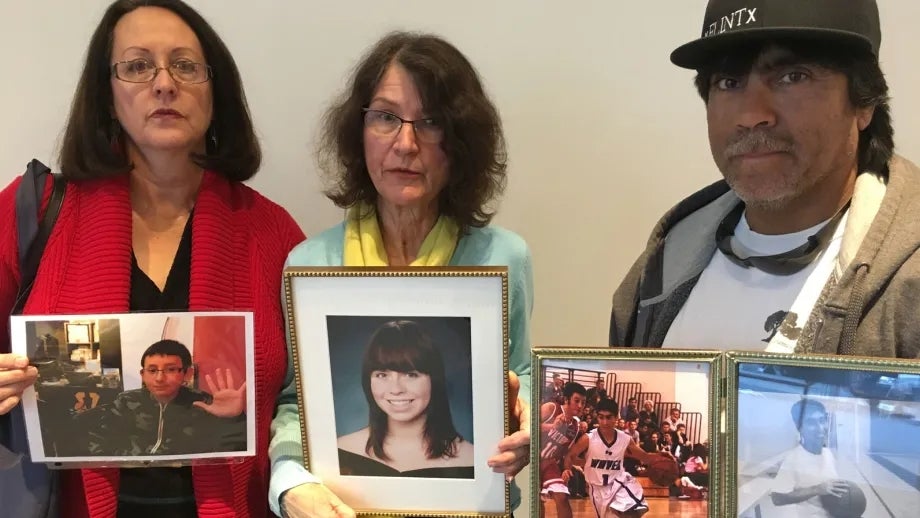MTC Closes Funding Gap for Golden Gate Bridge Suicide Barrier
It’s full speed ahead for the Golden Gate Bridge suicide deterrent project, thanks to an infusion of $40 million approved by MTC today. At their monthly meeting, MTC’s commissioners agreed to a funding swap, in which $40 million in federal funding originally designated for BART will go toward a net that will line the underside of the iconic bridge. MTC will make BART whole by allocating a like amount of bridge toll funding for the purchase of BART rail cars.
The creative funding package closed the final gap in the $204 million Golden Gate Bridge suicide barrier project, and paves the way for work to begin in early 2017, with fabrication and installation of the steel mesh safety net expected to take four years. When the low bid came in at $120 million over the original $84 million engineers’ estimate, the public agency partners scrambled to find additional funding. MTC, Caltrans and the Golden Gate Bridge, Highway and Transportation District are contributing an extra $40 million each to close the gap. This new funding from MTC comes on top of $27 million in federal funding approved by the Commission for the project in 2014 and an earlier grant for design and environmental review in the amount of $6.9 million, bringing MTC's total contribution to hearly $74 million.
“Last Friday our Board of Directors authorized the revised funding plan and awarded the contract” for the barrier, said Denis Mulligan, general manager for the Bridge District. “The action you will take today will allow us to build the net and save lives.”
Also on hand today were a number of parents of young people who had jumped from the bridge to their deaths. They carried photos of their children, passing them around to the commissioners will telling heart-breaking stories. Erika Brooks’ daughter Casey Joanna Brooks committed suicide from the bridge in 2008 at the age of 17, although her body was never found. A resident of Marin County, Brooks said that contrary to the common perception that bridge suicide victims are mainly adults, more than 10 percent are adolescents.
“I am here today to thank you for caring and not forgetting about those who in an instant stopped caring about themselves, for caring about people at risk in the future and making the bridge a safe place for all,” she told the commissioners. “Thank you for working over the past years with the Bridge District to end this needless tragedy. We are all pushing and praying for the day when the Golden Gate Bridge will become a monument to both beauty and compassion.” Brooks is a member of The Bridge Rail Foundation (bridgerail.org), a volunteer organization dedicated to ending suicides on the Golden Gate Bridge.
Feelings were especially raw for Pat Madden of San Francisco, whose son Jesse Madden-Fong committed suicide from the bridge last year, when he was just 15 years old and a freshman in high school. The parents had no idea their son was at risk for suicide. “I do know he could see the bridge from his classrooms at Washington High,” she said to the Commission. “I do pay attention when they talk about how youths can make decisions in just a few hours to commit suicide.”
In an interview after the meeting, Mulligan said that a suicide barrier doesn’t just break falls — it is a psychological deterrent that prevents people from even attempting a jump. “When nets have been erected, people stop jumping,” he said. As for the chosen device, “Nets are a proven technology,” he noted, with more than a dozen installed on bridges around the world over the past two decades.
Research shows that physical barriers are more effective than telephone hotlines in preventing suicide, said David Hull, a founding members of The Bridge Rail Foundation whose daughter Kathy Hull died from jumping off the bridge in 2003, when she was 26. “If access is denied, they go home to live their lives,” said Hull after the meeting.
According to Mulligan, 186 people came to the bridge to harm themselves last year. Of those, 153 were stopped and taken for a psychiatric hold at a local hospital, but 33 jumped from the bridge and died. While they come from around the world, most are from the Bay Area. Per The Bridge Rail Foundation's website, suicide jumps from the bridge occur at a rate of about three a month, with the cumulative toll over the 80-year existence of the span exceeding 1,500 deaths.
The deterrent system will actually consist of twin nets woven out of stainless steel rope whose expanse would span seven football fields. The nets will be cantilevered from either side of the 1.7-mile-long span and hang 20 feet below the pedestrian deck, meaning a jumper would fall the equivalent of two stories before hitting the nets. He or she would likely suffer injuries but survive. Painted gray to blend in with the water below, the nets won’t obstruct views of or from the bridge, Mulligan said. — Brenda Kahn


Submit your comment
In order to receive a reply to your comment, please provide an email address.